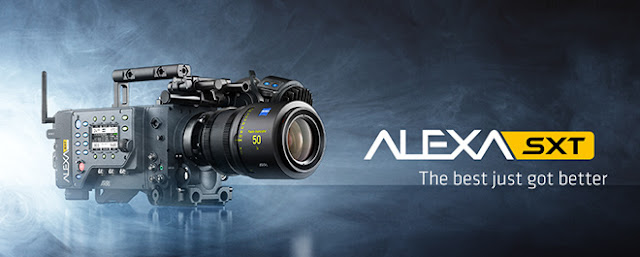SICA: ARRI WORKSHOP INDIA 2016-17
01:35:00
Arri is one of the most renowed and oldest motion picture camera manufacturing company that spread its wings to produce lenses, lights and other accessories.
After digital platform became the standard for recording and projecting images in film making, Arri quickly came up with digital cinema cameras D-20 & D-21.
Arri’s major success arrived with the introduction of Arri Alexa series cameras.
Arri’s workshop in association with Sica is an eye opener to understand about Arri Alexa camera’s workflow, lens and other important accessories.
Arri Team - Mr. Hans, Mr. Hendrik, Mr. Jorg.
In the presence of Sica President Mr. P.C.Sreeram
Venue: Prasad Lab Theatre, Chennai.
Date: 16.10.2016
Cinema Lens:
Before getting into Arri Cinema lenses and its features, Mr. Hans cleared the air by informing that the Cinema lenses especially ARRI lens optics system can support more than 10k resolution (in the wake of today’s aggressive marketing for increasing camera resolution and its lens compatibility).
Important quality features of lens to look for:
- Chromatic aberration
- Distortion
- Lens breathing
- Line pairs per Millimetre.
Advantages of oval Bokeh, distinctive flares and the ability to render out-of-focus areas of Arri Anamorphic lenses were explained.
Arri Alexa SXT 6:5 sensor mode (Beneficial for shooting with anamorphic lens)
When stretched, a 2x anamorphic lens used with standard 35mm film yields a 2.39:1 aspect ratio, commonly referred to as Cinemascope.
Since anamorphic lenses squeeze the 2.39:1 image by a factor of 2, the resulting area used on the sensor has a 1.195:1 aspect ratio that equates to 6:5 sensor modes that is included with all ALEXA SXT cameras. The ALEXA sensor is unique in that it has the same height as a 35 mm film frame, and so anamorphic lenses exhibit the same field of view as on 35 mm film.
ARRI Master Hand grips:
Most useful hand grips manufactured by Arri for using cinema cameras for Single man crew filming ENG (electronic news gathering) or documentary style functioning, where it enables to control exposure, focus and zoom operation single handedly.
It has left and right wheels, assigned buttons for aperture and focus, Left and right rockers for smooth zooming.
There is a red color joystick to move up/down to control camera related functions.
There is a touch screen display at the top of the master grip where you can glide through the pages for settings and recording button.
While moving the wheel we can witness T or f-stop of the lens we desire at the top of the left master grip.
ARRI Trinity (Steady cam with Gimbal)
Trinity is the most advanced camera stabilizer unit developed by ARRI which is a steady cam combined with a gimbal which uses both mechanical and electronic stabilization.
This unit can accept camera weight up to 30kg combining a Steady cam like vest configuration with a gimbal that offers pan and tilt controls, along with locked horizons and self-balancing features, the Trinity offers seamless low-to-high transitions.
Even a 45 degree camera rotation can be done either side. The advantage of Trinity is, it allows following movement from toe to head where other steady cam units allows only fixed angle position.
This unit allows using any high end cinema cameras like ARRI Alexa SXT with any type of lens except for few heavy Zoom lenses.
Wireless Compact Unit WCU-4
Arri's WCU-4 is a three axis of lens controller with a lens data display in a compact form. Easy-to-read lens and camera information is available on the large 3” display along with data from optional ultrasonic distance measurement devices.
The transflective display technology ensures perfect readability in all ambient lighting conditions.
The super-smooth focus knob contains an integrated light source that shines through the optionally pre-marked focus ring in low light conditions. Thus providing clearly readable focus marks at all times.
The super-smooth focus knob contains an integrated light source that shines through the optionally pre-marked focus ring in low light conditions. Thus providing clearly readable focus marks at all times.
This unit is more helpful to change aperture, lens focal length or focus in critical filming position like aerial or any action sequences.
It also displays at the right side ‘depth of field indicator’ according to the iris set. It operates and communicates data’s with the radio inside the camera.
To use this WCU-4 unit, motors has to be set for focus, Aperture and to zoom (if needed) connected to camera body via cable from motors.
There is also in need of radio connectivity antenna AMC- 1 to operate and receive radio signals from WCU-4 and camera.
Like AMC-1 there is also UMC-4, 3 axis motor controllers to be paired with wcu-4. The UMC-4 incorporates the LDS Lens Data Archive and generates frame-accurate lens data with any lens.
Lens data is used for lens mapping to pre-marked focus rings and depth-of-field display on the WCU-4 hand unit.
It also enables focus tracking, setting the focus motor to continuously follow a subject by using an ultrasonic distance measurer for VFX tasks in post.
ARRI AMIRA
Arri Amira camera was introduced and clearly stated that this camera is not only meant for documentary filming. It is a multipurpose camera which has high quality Arri Alexa sensor. The only major difference is that this camera doesn’t record raw images.
During the workshop, ARRI camera’s post production work flow was explained and Arri Alexa’s flexibility of different recording options displayed.
On a concluding note, visuals from Indian cinematographers using Arri Alexa was screened and appreciated.
CJ Rajkumar
Author / Cinematographer.






0 comments